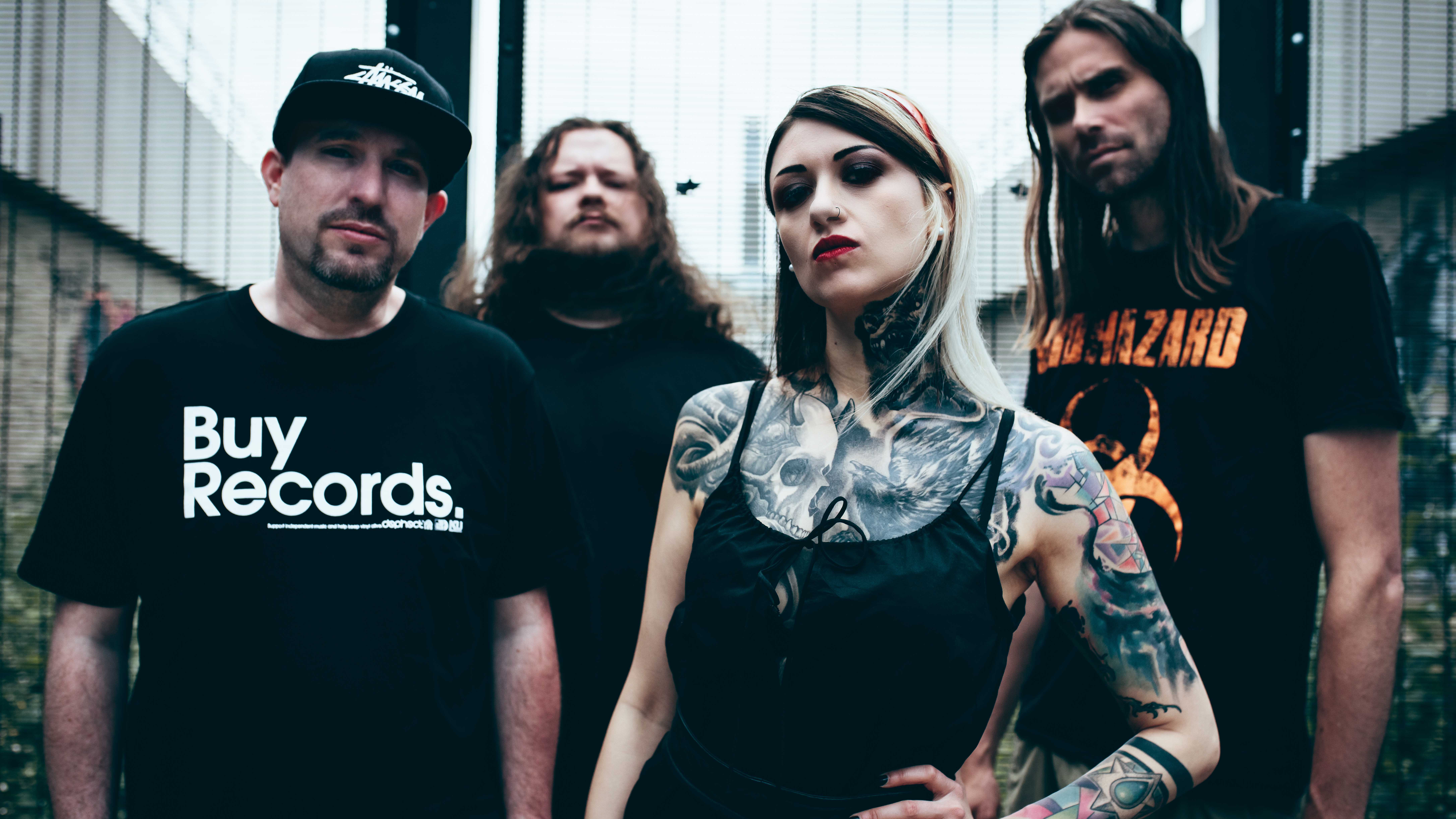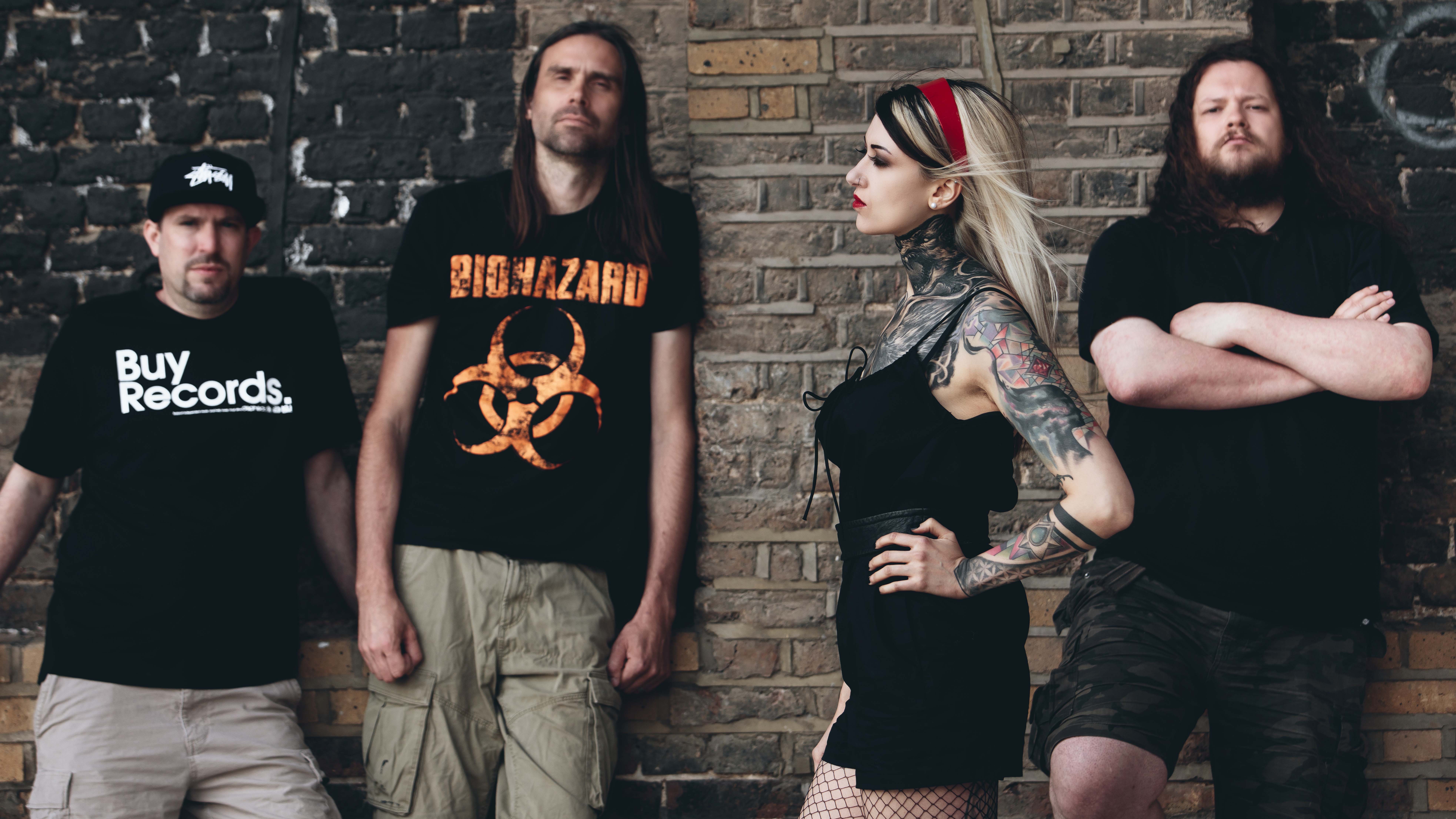
Fans of metal guitar will already be familiar with Tesseract guitarist James Monteith, whose technical chops, melodic lead style and progressive riffing have helped propel the band’s sound since he joined in 2006.
Now, James is stretching out, and returning to his love of hardcore with new project, Cage Fight. “Growing up I was a huge fan of simple grooves mixed with aggression, that was at the root of hardcore at the time.” James tells us. “Bands like Biohazard, Strife and Madball were my go-to good feel heavy music, as it always got my head nodding."
After joining Tesseract, James made the band his sole musical focus, leaving little time for other projects, however, you might recall that a couple of years ago we were all subjected to some enforced down time, prompting James to re-explore his love of ’90s/00s hardcore.
“Pretty much since my early 20s I’ve had in the back of my mind that this style of music would be really fun to make. I loved and still love every minute of playing in Tesseract. But over lockdown I got out the 6-string in standard tuning/ drop D, and rediscovered my love for the metal-hc style.”
The result is Cage Fight, a raw guitar/bass (Jon Reid)/drums (Nick Plews) line-up with the addition of former ETHS vocalist Rachel Aspe. With Cage Fight's debut album due to arrive in May, if you’re expecting dynamics and soundscapes, your hopes will be figuratively shot down by the opening machine-gun riff of latest single Shine Don’t Fade.
This is aggressive, angry music and features some incredible musicianship across the board, not least some stellar punk/thrash/hardcore-inspired guitar work from James. We spoke to the guitarist to find out more about how Cage Fight came together, and what you can expect from one of the UK’s most anticipated new hardcore bands in 2022.

How did you meet Rachel?
Want all the hottest music and gear news, reviews, deals, features and more, direct to your inbox? Sign up here.
"We originally met back in 2014 when Tesseract was touring France, and she was at a show with her bandmates in Eths. We connected on social media, but didn’t really speak again until we started Cage Fight.
"Jon and I had been playing around with ideas for Cage Fight over 2020 but there was something we were missing, and when I saw a video of her covering ‘Statutory Ape’ by The Black Dhalia Murder and it clicked that she would be great for this project.
"I dropped her a message asking if she’d be interested in checking out an instrumental, she said yes, and in a day or so she sent back a killer vocal demo. And now we’re here!"
How would you describe the playing style/musical demands in Cage Fight compared to Tesseract as a guitarist?
"Tesseract’s playing style is very much about dynamics, subtleties, detail and accuracy. It also requires significant brain power and concentration, until the songs become muscle memory, but that does take time.
"Cage Fight is very much at on the opposite end of the spectrum- the construction is simple and it’s mostly at 11 the whole way in terms of intensity and volume. We don’t play to clicks so a key part of the performance is naturally vibing with the other members without the guidance of a computer.
"Technique-wise, inaccuracies actually play a strong role in the overall sound; it’s much more about conveying attitude and energy than precision. It’s also much more physically demanding on the right hand, as it involves a lot of fast down picking and thrashy alternate picking.
"When I first started playing this music I struggled to finish playing a song without feeling pain or strain in my hand. I had to work on my right hand picking efficiency but also stamina, which is something I didn’t expect!"
How does your rig compare to what you use with Tesseract?
"It couldn’t be more different. Tesseract’s current rig is using the Neural Quad Cortex, which is controlled by Cubase via MIDI, so all the patch changes are automated.
"There are many tempos and delays and various other effects that change regularly, so automation is almost essential as it would be way too complicated to change patches manually.
"We also run an in-ear monitor rig and can control our mixes via an ipad or phone. It's all 7-string guitars in various DADGAD-related tunings, with the most common one in A.
"Cage Fight’s rig is old-school: guitar/wah pedal/noise gate/amp (a 100-watt EVH 5150 III). And ear plugs, because it’s very loud! I use a 6-string guitar in standard and drop D tunings."
How would you describe your sound to a new listener?
"We’re mixture of metallic-hardcore and thrash- it’s fast, groovy and very aggressive. It’s very much more vibe and energy over precision and fitness."
What artists do you think you could potentially share fans with?
"I guess HC bands from the late 90s / early 00, such as Biohazard, Hatebreed, Terror, Walls of Jericho. As well as fans of thrash across the generations, such as Slayer, Kreator, Havok and Extinction AD. We also have a Body Count cover on the record, I’m excited to see what BC fans think of that!"
Which of your songs best represents your sound and why?
"Our latest single ‘Shine Don’t Fade’ is a good all-rounder. It’s a mixture of fast thrash, a bouncy thrash / crossover verse, and a classic sounding hardcore chorus."
What inspired the creative process for the album?
"The first ideas came from just jamming out on the 6-string, something I’ve not dedicated any time to for a decade and a half, so it was really refreshing. Working with Jon we shaped the first few tracks which set the tone for how we would continue.
"In February we had the bones of 2/3 songs, and a pile of riffs, and bringing in Nick and Rachel meant that we turned those ideas into a full album by July. Most of the writing happened in the space of 6 months - we clicked brilliantly, and it came together really quickly."

What is your favourite musical experience/memory with this band so far?
"The first demos were very exciting, by April we had 5 tracks which Acle (Tesseract guitarist) mixed for us in exchange for beer. It was that point when we really knew we were onto something,
"We decided to release one of them (Hope Castrated) in May and it got a great response, including an offer for a record deal, so that was pretty exciting. Recording the album was also great- we spent 10 days doing drums and vocals at Outhouse Studios (in Reading) with John Mitchell.
"It was amazing seeing the album really come to life. But my absolute favourite moment was probably our first run of dates; we had a great time hanging out and it was awesome to finally take the songs to venues and play to people."
Is there a particular album that had a big impact on you growing up and how did it influence your playing?
"That’s a very hard one. But I think I’ll have to go back to very early on and say The Black Album by Metallica. I distinctly remember putting it on, and then hearing the palm mutes in Enter Sandman, and at that moment I was like ‘I want to do that’. To this day I find very few things as satisfying as a good palm mute. Haha!"
If you could steal the production off one album/track, which would you take and why?
"A very hard question, as I love so many different sounds from different genres. But if I could recreate a feeling that I felt from amazing production, it would be when I heard Machine Head Burn My Eyes. I’ll never forget the power and intensity I experienced when Davidian kicked in, and still to this day it gives me goose bumps."
Do you have any go-to gear for songwriting and demoing ideas and why is it important to you?
"Convenience and ease is most important. If I have an idea I want to get it down quickly. So I fire up Cubase, use Toontrack Superior Drummer 3, and my old Axe-FX Ultra, with the rhythm patches used from Tesseract’s Altered State album, and Neural DSP’s Darkglass plug in. It just works!"
What instrument or piece of gear would you like to get next and why?
"Not an exciting answer- but I’m thinking about getting a wireless system. We’ve been using cables the whole time with Tesseract as we’ve not had much need for movement. But this band is a little more active so I’m keen to get some freedom from the cables!"
Where would you like to take your sound next?
"Not entirely sure yet.. maybe darker and heavier.. But I’d also like to experiment more with song structures and additional guitar parts. The penultimate track on the album ‘My Dreams’ felt like a step in that direction.
"However we might throw all that in the bin and make a punk rock record! I think it’ll turn out however the four of us vibe with it.. This band is very organic and I’d like the next direction to be made organically too. Whatever we feel we want to do and whatever works!"
Cage Fight's self-titled debut album is released 13 May and is available for pre-order now

Rob is the Reviews Editor for GuitarWorld.com and MusicRadar guitars, so spends most of his waking hours (and beyond) thinking about and trying the latest gear while making sure our reviews team is giving you thorough and honest tests of it. He's worked for guitar mags and sites as a writer and editor for nearly 20 years but still winces at the thought of restringing anything with a Floyd Rose.